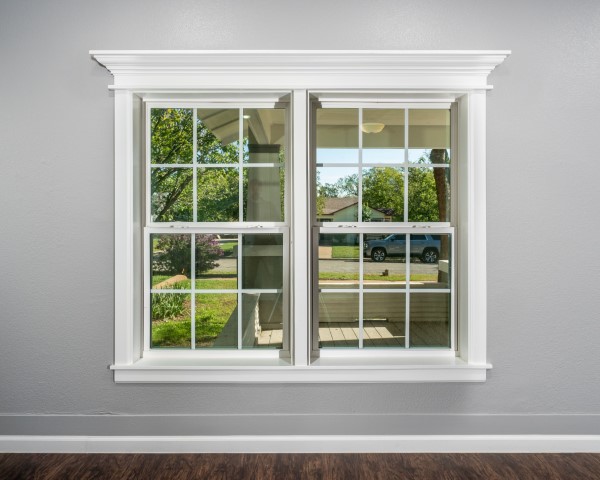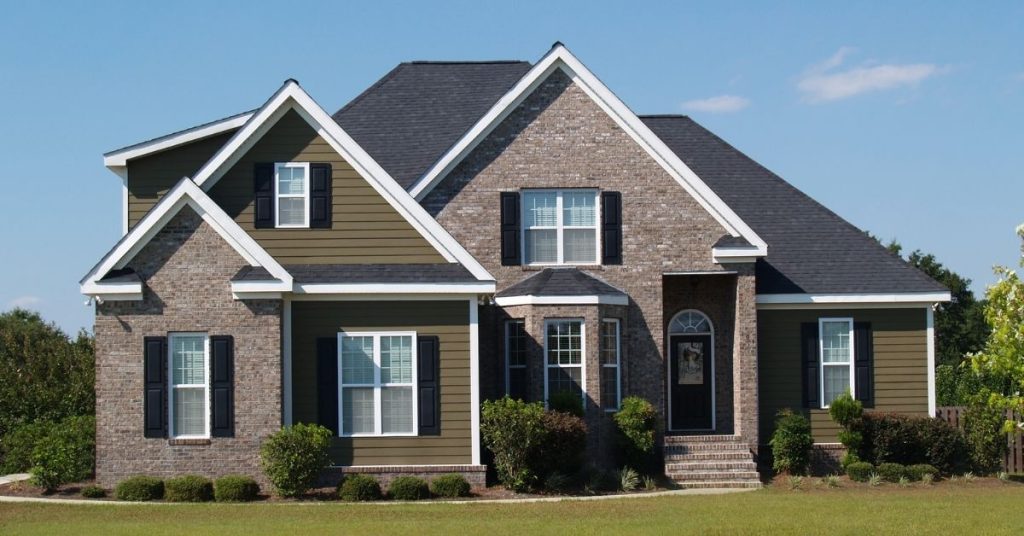If you’re in the market for replacement windows, it’s important to know what you’re looking for when window shopping. Knowing the appropriate terminology will help you find the right window replacements more quickly and save time when you decide to call a contractor. There’s no point calling a company that offers anything but the best.Here are some common terms that will be helpful in your window-shopping quest to find the best window replacements:
| Term | Definition | Use in Windows |
|---|---|---|
| Low-E Glass | Low emissivity glass designed to reduce heat and cold transfer, offering greater energy efficiency and protection against UV rays. | Coating applied to glass panes for energy efficiency. |
| R-Value | Measurement of thermal resistance, indicating how well a material insulates against heat transfer. | Mentioned in window specifications for insulation assessment. |
| Argon Gas | Odorless, non-toxic gas used in double-pane windows to improve energy efficiency by serving as an insulator with lower heat conductivity than air. | Filled between panes to enhance insulation and efficiency. |
| U Factor Rating | Measurement showing how much heat a material allows transfer through it; lower ratings signify better insulation and energy efficiency. | Commonly provided in window specifications for efficiency. |
| Energy Star Certification | Government-backed program certifying energy-efficient products, promoting sustainability and energy savings. | Displayed on labels for products meeting efficiency standards. |
| Triple-Glazed Windows | Windows featuring three layers of glass separated by gaps, providing enhanced energy conservation and noise reduction capabilities. | Refers to windows with triple-pane glass for insulation. |
| Double-Hung Windows | Windows consisting of two panes of glass that slide up and down, often considered secure with locks located on the inside. | Style of window with locks for security. |
Low-E Glass
Short for low emissivity glass, Low-E Glass is specifically designed to reduce heat and cold transfer. Low-E Glass is far more energy-efficient than regular glass. Look for Cardinal’s LoE3, which reduces heat gain 64% more than ordinary glass and also protects you from 95% of dangerous UV rays.
R-Value
A measurement of thermal resistance. Opting for window replacements with a high R-value ensures superior thermal resistance, maximizing energy efficiency and reducing heat loss or gain. This helps create a more comfortable indoor environment while lowering energy costs and promoting sustainability.
Argon Gas
Argon gas is an odorless and non-toxic substance, that is utilized in double-pane windows to enhance energy efficiency. Acting as an insulator, it possesses lower heat conductivity than air, effectively minimizing heat transfer and improving overall insulation performance for greater energy savings.
U Factor Rating
The U-factor rating indicates the amount of heat transferred through a material. Widely available on Canadian windows, this rating helps consumers understand a window’s thermal efficiency, guiding them in selecting options that minimize heat loss or gain for enhanced energy efficiency and comfort.
Energy Star Certification
All Energy Star Certified products have been assessed and certified by independent professionals. This government-backed program was designed to help homeowners and businesses become more energy efficient; it evaluates each product based on several criteria.These are the first things you should look for when you’re window shopping because they are sure signs of quality. Energy-efficient windows will help you save money while you’re living in your home and make it more appealing to potential buyers when you eventually decide to sell it. The best window replacement companies know that and make a point of stocking only the most energy-efficient products available.
| Term | Definition | Use in Windows |
|---|---|---|
| Casement | A window attached to its frame by hinges at the side, opening outward like a door. | Style of operable window. |
| Awning | A window hinged at the top, opening outward from the bottom, often operated with a crank handle. | Style of operable window. |
| Single-Hung | A window with two sashes, but only the bottom sash is operable, while the top sash remains fixed. | Style of window with one operable sash. |
| Fixed | A window that cannot be opened or closed, often used for decorative purposes or to provide natural light. | Style of non-operable window. |
| Mullion | A vertical or horizontal element that divides a window into multiple sections or panes. | Architectural feature dividing window sections. |
| Sash | The framework holding the glass panes in a window; may refer to the entire movable part of a window. | Structural component of operable windows. |
| Grilles/Grids | Decorative elements dividing a window into smaller panes or sections, typically made of wood, metal, or plastic. | Design feature for enhancing window appearance. |
| Glazing | The glass or transparent material used in a window, including single, double, or triple-pane options. | Component providing transparency and insulation in a window. |
| Jamb | The vertical side of a window frame where the sash or casement is hinged or slides. | Structural part of window frame for mounting sash or casement. |
| Sill | The horizontal bottom part of the window frame that rests on the foundation or supports the window assembly. | Component providing structural support and drainage for the window. |
Casement
A casement window is attached to its frame by one or more hinges at the side and opens outward like a door. This design allows for maximum ventilation and unobstructed views when fully opened. Casement windows are operated using a crank handle, making them easy to open and close. They are commonly used in areas where airflow and natural light are desired, such as bedrooms, living rooms, and kitchens.
Awning
An awning window is hinged at the top and opens outward from the bottom, creating an angled opening that resembles an awning. This design allows for ventilation even during light rain, as the window sash forms a protective cover over the opening. Awning windows are often operated using a crank handle, making them easy to open and close. They are commonly used in bathrooms, kitchens, and basements to provide airflow and natural light.
Single-Hung
A single-hung window features two sashes, but only the bottom sash is operable, allowing it to slide up and down vertically. The top sash remains fixed in place. This design provides ventilation by allowing the bottom sash to be opened while maintaining the structural integrity of the window with the fixed top sash. Single-hung windows are popular in traditional and modern architectural styles and offer ease of use and maintenance.
Fixed
A fixed window is a type of window that cannot be opened or closed. It is commonly used for decorative purposes or to allow natural light into a space. Fixed windows are typically installed in locations where ventilation is not required, such as high on walls or in areas where access is limited. They come in various shapes and sizes and can be customized to complement the architectural style of a building.
Mullion
A mullion is a vertical or horizontal element that divides a window into multiple sections or panes. Typically made of materials like wood, metal, or vinyl, mullions provide structural support and aesthetic appeal to the window assembly. They help define the architectural style of the window and can be customized to match various design preferences. Mullions also contribute to the overall strength and durability of the window, ensuring its longevity and performance.
Sash
The sash is the framework that holds the glass panes in a window, serving as a crucial component of its structure. It encompasses the entire movable part of the window, including the glass and any accompanying hardware for opening and closing. The sash plays a vital role in providing structural integrity and stability to the window assembly, ensuring proper operation and sealing against external elements for optimal performance and longevity.
Grilles/Grids
Grilles, also known as grids, are decorative elements used to divide a window into smaller panes or sections. Typically made of materials such as wood, metal, or plastic, grilles enhance the aesthetic appeal of windows while adding architectural interest. They can be customized to match various architectural styles and design preferences, providing both visual charm and structural integrity to the window assembly. Grilles offer versatility in design, allowing homeowners to personalize their windows to suit their tastes.
Glazing
Glazing refers to the glass or transparent material used in a window, which can come in various configurations including single, double, or triple-pane options. It plays a crucial role in providing transparency and insulation for the window, helping to regulate indoor temperature and reduce energy loss. The choice of glazing can significantly impact the overall performance and efficiency of the window, making it an important consideration in window selection and installation.
Jamb
The jamb refers to the vertical side of a window frame where the sash or casement is hinged or slides. It provides structural support and stability for the window components, allowing for smooth operation and secure attachment. The jamb plays a crucial role in ensuring proper alignment and sealing of the window, contributing to energy efficiency and overall performance.
Sill
The sill is the horizontal bottom part of the window frame, offering structural support and stability for the window assembly. It rests on the foundation or bears the weight of the window, ensuring proper alignment and durability.
Bonus tip
Before you go window shopping, write down a list of what you want and another list of questions. Things will go a lot more smoothly if you already have an idea of what you want when you start working with your chosen company — and a professional company will have no problem answering any of your questions.Here at ALDA, we have helped many homeowners find the perfect vinyl windows for them and their homes. We invite you to contact us today so we can help you find the next windows for your home.
FAQs
What are triple-glazed windows?
Which window style is the safest?
Double-hung windows are known as the most secure option for installation. They function by sliding up and down and consist of two panes of glass. The locks are located on the inside, with some windows equipped with additional equipment at the top for improved security.

